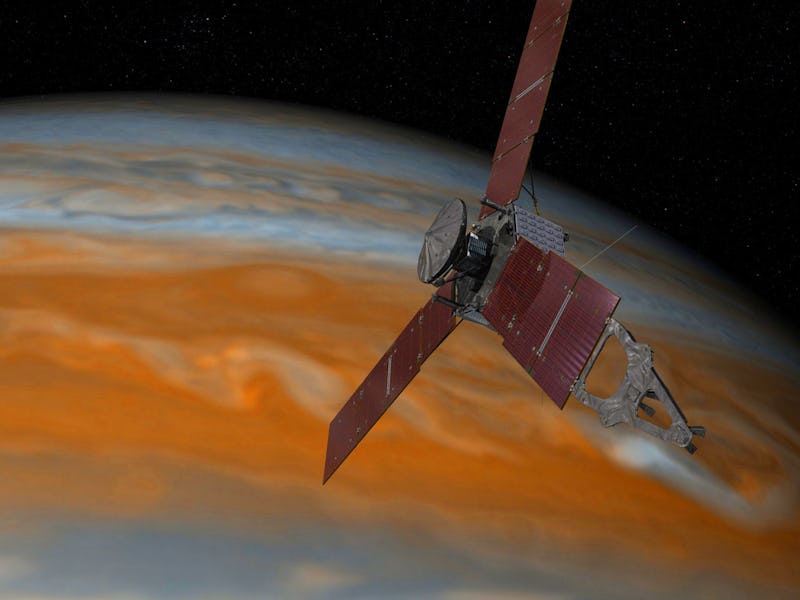NASA’s Juno Mission has run into some problems on its voyage to orbit Jupiter and study the gas giant. On October 18, the probe went into safe mode, meaning it turned off all non-essential processes while it pondered how to deal with an unexpected threat, or change in environment. It could’ve been much worse, but NASA announced on Tuesday that Juno had exited safe mode and appears to be doing fine.
Mission controllers commanded that the probe go back to normal the previous day, and the request seems to have worked. “Juno exited safe mode as expected, is healthy, and is responding to all our commands,” said Rick Nybakken, Juno project manager from NASA’s Jet Propulsion Laboratory in a release.
It’s great news for Juno, since it means the probe, some 594 million miles from Earth, should be ready for it’s scheduled flyby of Jupiter in December. NASA has already had to push some rocket burns back, and as a result, the probe will only do 20 close flybys instead of the initially planned 33. However, NASA says the plan was always “very flexible,” and now that Juno appears to be back in action, it won’t have to waste any more time.
To prepare for the December 11 flyby, Juno executed an orbital trim maneuver on Tuesday afternoon, burning its smaller thrusters for a hair over 31 minutes to slow down the probe by 5.8 mph.
“We are all excited and eagerly anticipating this next pass close to Jupiter,” Scott Bolton, principal investigator of Juno from the Southwest Research Institute in San Antonio, said in the release. “The science collected so far has been truly amazing.”
Some members of the Juno team.
It’s unclear, at this point, why Juno went into safe mode. When it happened, Bolton said it was “too early to take a guess as to what caused it,” adding that “it did happen pretty far away from Jupiter,” so the culprit probably wasn’t the planet’s radiation belts.
NASA says the team is “still investigating the cause of the reboot and assessing two main engine check valves,” though the mission is going ahead as rescheduled.
